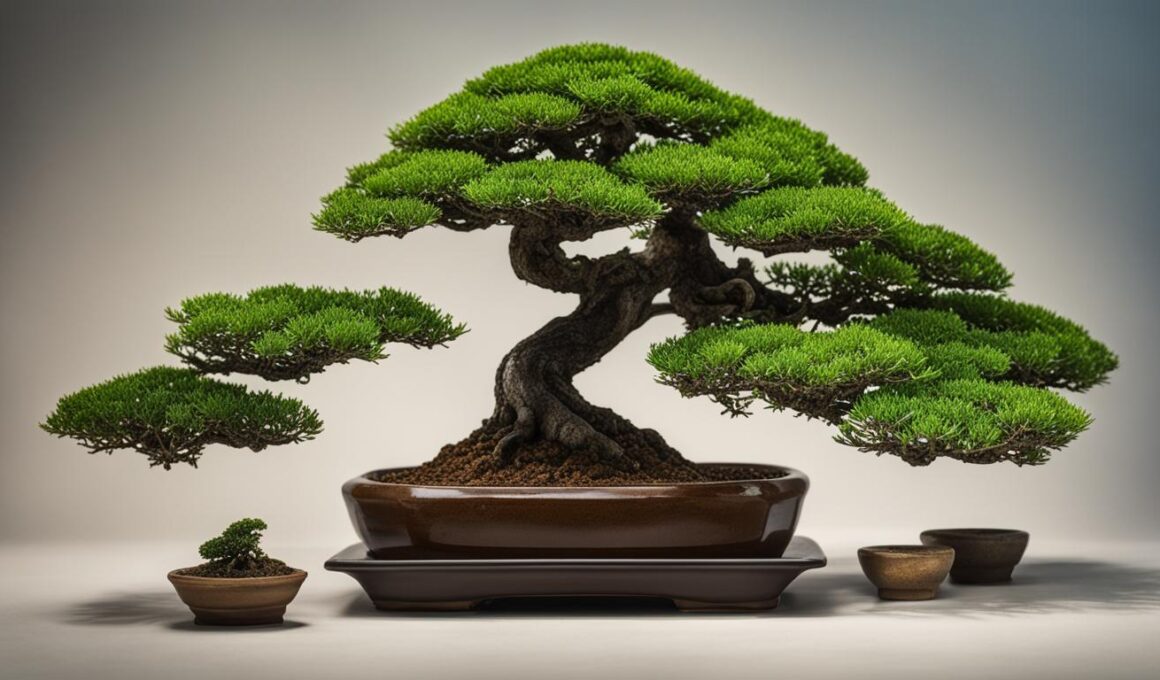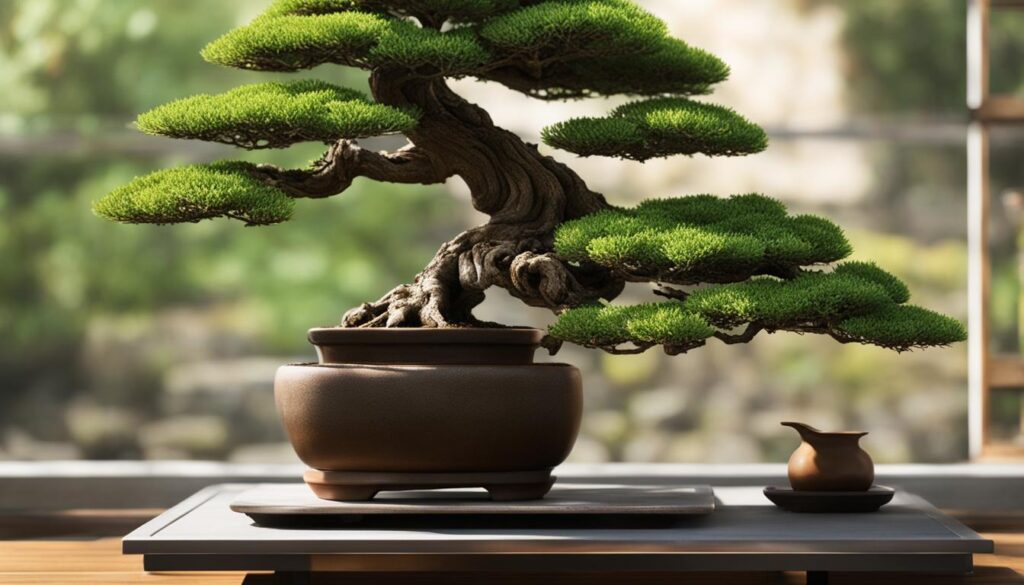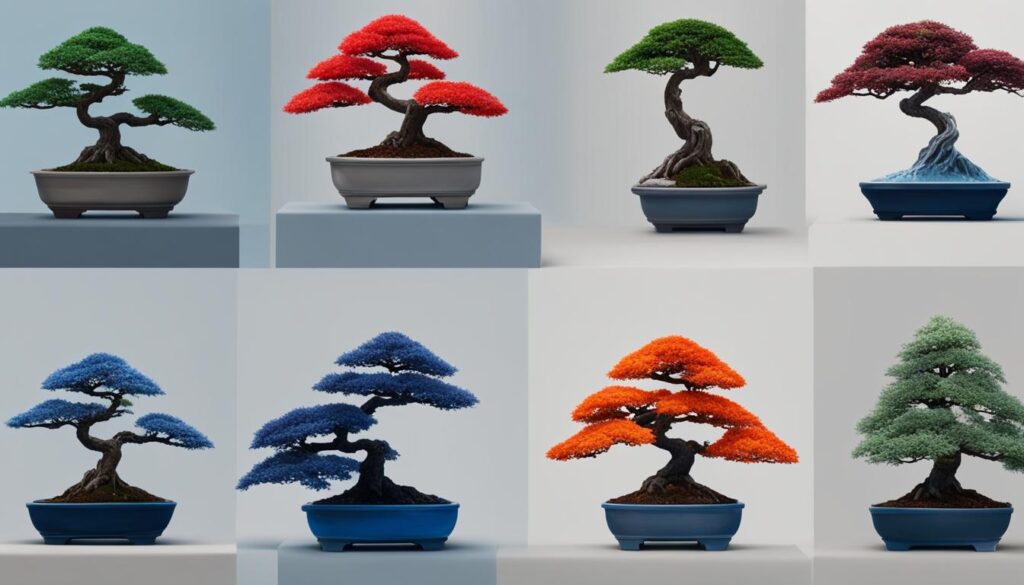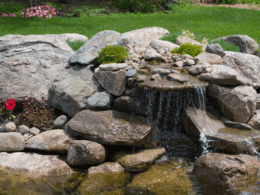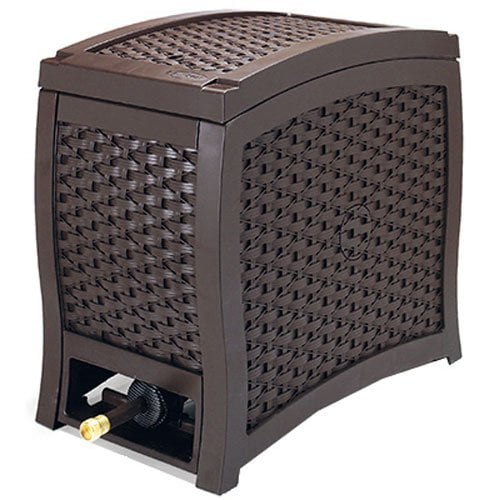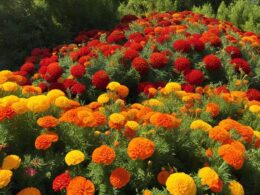Caring for a bonsai tree is an art that involves understanding your tree’s unique needs in terms of maintaining optimal health. One of the most critical aspects of bonsai care is understanding the appropriate bonsai tree watering frequency. Knowing when and how often to water your bonsai tree can significantly impact its overall health and longevity. This article will discuss the important elements of watering bonsai trees and how you can ensure your tree remains well-nourished and healthy throughout its life.
Key Takeaways
- Regularly observe your bonsai tree’s soil moisture to determine when to water, since individual trees have unique needs.
- Use proper soil mixtures with good drainage properties to enhance bonsai health and water management.
- Environmental factors, such as temperature and the tree’s location, influence watering frequency and techniques.
- Ensure thorough watering of the bonsai tree, reaching the entire root system for proper hydration.
- Be mindful of over-watering and under-watering, which can both significantly affect the health and growth of a bonsai tree.
Understanding Bonsai Watering Basics
Watering bonsai trees is an essential aspect of maintaining their health and vitality. However, determining when to water your bonsai can be a bit challenging, especially for beginners. Rather than sticking to a strict schedule, closely monitoring your bonsai’s individual needs is crucial. This section of our bonsai watering guide will provide insights on recognizing when your bonsai needs water and understanding how the soil moisture for bonsai plays a vital role in this process.
Recognizing When Your Bonsai Needs Water
One of the essential aspects of bonsai care is understanding when to water your tree. Observing the bonsai soil dryness without letting the tree completely dry out is key. Watering should not be predetermined by routine but instead by closely monitoring each bonsai tree for its unique needs.
To determine when your bonsai needs to be watered, you should:
- Check the soil moisture at about 1 centimeter deep by inserting your finger or using a moisture meter.
- Look for visual cues, such as the soil pulling away from the sides of the pot.
- Feel the weight of the pot, as a lighter pot indicates dryer soil.
- Assess the foliage’s appearance for any signs of dehydration, such as wilted or dry leaves.
It is essential to keep the soil moist but not wet to prevent root rot and other diseases. It is also vital never to allow the bonsai tree to dry out completely. The frequency of your watering will vary depending on factors like the bonsai soil mixture, pot size, and environmental conditions.
Proper soil mixture, which may include akadama, pumice, and lava rock, significantly impacts how often bonsai trees require water. The soil plays an essential role in retaining moisture and ensuring adequate aeration, allowing for proper root growth and overall tree health.
| Soil Component | Impact on Watering |
|---|---|
| Akadama | Highly water-absorbent, allowing for better moisture retention. |
| Pumice | Provides great aeration and good drainage, leading to more frequent watering. |
| Lava Rock | Improves drainage and aeration, facilitating better root development. May require more frequent watering. |
Now that you understand the basics of recognizing when your bonsai needs water and the link between soil moisture and bonsai health, you’re better equipped to offer your tree the proper care it needs to thrive. Remember, always be observant and responsive to your bonsai’s individual watering requirements for optimal care and longevity.
Factors That Influence Bonsai Watering Frequency
Bonsai tree watering frequency is determined by a variety of factors, such as the environment’s temperature, wind exposure, tree size, and soil composition. In this section, we will discuss how these factors impact the watering needs of your bonsai tree.
Outdoor temperatures demand more frequent watering, especially in hot weather to prevent foliage from drying out. Similarly, windy conditions can lead to increased water loss through leaves, necessitating more frequent watering to maintain the tree’s overall health.
Bonsai Pot Size and Tree Size
Smaller bonsai trees with less soil in their pots may require more frequent watering compared to larger ones. This is primarily due to the limited amount of soil and available water present in smaller pots. Conversely, larger bonsai trees in larger pots will have more soil and a greater amount of water available, reducing the need for frequent watering.
Bonsai Soil Mix
A free-draining soil mixture benefits tree health by promoting air circulation and preventing the development of root rot. However, this type of soil also requires more frequent watering due to its fast-draining nature. Adjusting your bonsai soil mix to balance water retention and drainage can help you maintain an appropriate watering schedule.
Environmental Impacts on Bonsai
Various environmental factors can also impact the watering needs of your bonsai tree. For example, a bonsai tree grown in a humid environment may require less frequent watering than a tree grown in a dry environment. By observing and responding to changes in the conditions that surround your bonsai tree, you can ensure that it receives the proper amount of water to maintain its health.
- Temperature and Wind Exposure
- Bonsai Pot Size and Tree Size
- Bonsai Soil Mix
- Environmental Impacts on Bonsai
In conclusion, several interconnected factors influence how frequently you should water your bonsai tree. It’s essential to be attentive to these factors and adjust your watering schedule accordingly to maintain your bonsai tree’s health and well-being.
Choosing the Right Soil Mixture for Your Bonsai
One of the key factors in maintaining optimal bonsai health and determining the ideal watering frequency is selecting an appropriate bonsai soil mixture. A proper bonsai soil mix should drain quickly, retain adequate water, and allow for aeration, providing the tree with optimal growing conditions.
Often, bonsai soil mixtures consist of akadama soil combined with other components such as pumice and lava rock to cater to the tree’s needs for optimal water management. These components aid in water retention while maintaining free-draining bonsai soil, ensuring the roots receive the necessary amount of water and oxygen to maintain a healthy bonsai tree.
There is no one-size-fits-all solution when it comes to bonsai soil mixtures as the ideal mix may vary depending on the tree species, climate, and individual watering preferences. Some bonsai enthusiasts opt to create their mix or purchase premade specialty bonsai soil mixes that cater to different tree types and needs. The following table summarizes various bonsai soil components and the benefits they offer:
| Component | Benefits |
|---|---|
| Akadama soil | Retains water, provides nutrients, and promotes root growth in bonsai trees, while maintaining aeration and drainage. |
| Pumice | Improves aeration and drainage while providing a long-lasting structure which contributes to root development. |
| Lava rock | Induces better water drainage and aeration, giving the roots ample access to oxygen and preventing overwatering. |
When selecting a bonsai soil mixture, consider the following:
- Consider the ideal watering frequency for your specific bonsai tree and choose a soil mixture that best accommodates the tree’s needs.
- Keep in mind your location and climate, as tree species native to your region may require different soil components than those from other regions.
- Be attentive and adaptable, as bonsai trees may require adjustments to their soil mixtures from time to time depending on factors such as growth, aging, and environmental fluctuations.
In summary, selecting a suitable bonsai soil mixture is essential for proper water retention and aeration, ultimately determining the ideal watering frequency for your bonsai tree. It’s crucial to consider factors such as tree species, location, and climate while being open to adapt or modify the soil mix as needed to maintain optimal bonsai health.
The Impact of Environment on Bonsai Watering Practices
Bonsai watering practices are heavily influenced by environmental factors such as temperature and location. Warmer weather increases the tree’s water demand to sustain foliage hydration, while other variables like wind exposure contribute to changes in bonsai care. In this section, we will explore the effects of temperature and the differences in indoor and outdoor settings on bonsai watering frequency.
Temperature and Its Effects on Watering
The bonsai watering temperature is vital for the tree’s health as it will affect the frequency at which it needs water. Warm temperatures can cause water to evaporate more quickly from the soil and leaves, leading to a higher water demand to maintain foliage hydration. This heat impact on bonsai trees means that they may require more frequent watering during hot weather or seasons with higher temperatures.
- Monitor soil moisture closely during warmer months, ensuring the tree receives enough water to prevent drying out.
- Adjust your seasonal bonsai care practices according to changes in temperature, being particularly mindful of changes between day and night.
- Remember that changes in humidity can also affect evaporation, making it necessary to modify watering even if the temperature remains constant.
How Indoor and Outdoor Settings Affect Watering
Whether your bonsai tree is situated indoors or outdoors can significantly impact its watering needs. Indoor bonsai watering practices differ from outdoor bonsai care as the environment and climate conditions vary.
Indoor bonsai watering often requires increased attention to the temperature within homes or offices, which can affect the tree’s water needs. It might be necessary to adjust your watering frequency if you observe variations in indoor conditions. However, bonsai trees tend to thrive outdoors, making it crucial to monitor and accommodate for outdoor bonsai care needs, including:
- Changes in sunlight exposure, with increased access to natural light potentially resulting in higher water demands.
- Windy conditions causing more significant water loss through the leaves, leading to increased watering frequency.
- Shifting seasonal weather patterns that contribute to both colder temperatures and drier periods, requiring adjustments to bonsai care.
By understanding and considering the effects of temperature and the differences between indoor and outdoor environments, you can better cater to your bonsai tree’s specific watering requirements and ensure healthier growth and care.
Effective Watering Techniques for Bonsai Care
Proper watering ensures the health and longevity of your bonsai tree. In this section, we will discuss two different approaches to watering – thorough bonsai soaking and light watering approach – and the importance of water quality in bonsai maintenance.
Thorough Watering vs. Light Watering
When it comes to watering your bonsai tree, the techniques you choose can significantly impact its health and well-being. There are two primary approaches: thorough watering and light watering.
- Thorough Watering: This method requires you to saturate the entire soil and root system of your bonsai tree. Proper saturation supports nutrient uptake and ensures root health. To execute this technique, continue watering until water drains out of the pot’s holes. This method is highly recommended for maintaining healthy bonsai trees.
- Light Watering: As the name suggests, this approach involves a lighter touch. The goal is to keep the topsoil moist, but it may not reach the deeper root system. Although easier and less time-consuming, this method can cause root dehydration and hinder nutrient absorption, leading to a weakened bonsai tree.
By understanding the differences between these bonsai watering techniques, you can choose the method that best suits your bonsai tree’s needs and your schedule. However, it’s crucial to emphasize that thorough watering is the ideal approach for optimal bonsai health.
The Role of Water Quality in Bonsai Maintenance
Water quality plays a significant role in the health and maintenance of your bonsai tree. Different sources of water possess varying properties that can either enhance or hinder your tree’s growth and development.
- Rainwater for Bonsai: Rainwater is considered the best choice for watering your bonsai tree. Unlike tap water, it doesn’t contain added chemicals like chlorine and fluoride. Furthermore, rainwater is naturally slightly acidic, which can benefit your bonsai tree’s nutrient absorption.
- Tap Water Effects on Bonsai: Although tap water is a readily available and cost-effective option, it can lead to a buildup of minerals and chemicals in your bonsai tree’s soil over time. These deposits can affect your bonsai tree’s health and require monitoring. If you must use tap water, be sure to periodically leach the soil, flushing it with large amounts of water several times to remove these excess buildups.
In conclusion, understanding and implementing effective bonsai watering techniques, such as thorough bonsai soaking, and considering the quality of water used, including the benefits of rainwater for bonsai, are essential aspects of bonsai tree care. With proper watering practices and water quality management, your bonsai tree will thrive and continue to bring joy for years to come.
Signs of Over-Watering and Under-Watering Your Bonsai
It is crucial to recognize and address the symptoms of both over-watering and under-watering your bonsai tree. Over-watering can lead to root rot, while under-watering can cause the plant to die quickly. The goal is to maintain evenly moist soil, allowing it to dry slightly between waterings without letting the tree become excessively dry out—especially during summer months.
Identifying and Addressing Watering Issues
To ensure optimal bonsai health, familiarize yourself with common symptoms associated with watering problems. While adjusting watering methods tailored to indoor and outdoor environments, take care not to displace soil or under-water roots to counteract bonsai watering problems. Refer to the table below for help identifying and addressing issues related to over-watering and under-watering your bonsai tree.
| Issue | Symptoms | Solutions |
|---|---|---|
| Over-Watering |
|
|
| Under-Watering |
|
|
By carefully monitoring your bonsai tree’s health and adjusting your watering practices accordingly, you can maintain an ideal balance between over-watering and under-watering. In turn, this will significantly improve your bonsai tree’s overall health and vitality.
What Effect Do Different Soil Alternatives Have on the Watering Needs of Bonsai Trees?
When it comes to bonsai trees, choosing the right bonsai soil alternatives for health can have a significant impact on their watering needs. Soil mixes with good drainage like akadama, pumice, and lava rock can reduce the frequency of watering, while overly organic mixes may require more frequent watering to prevent waterlogging.
Conclusion
In conclusion, maintaining bonsai health relies heavily on understanding and responding to its unique watering requirements. While avoiding complete dryness and watering thoroughly when the soil is slightly dry, you have the foundation for optimal bonsai care. Always remember that various environmental factors, soil mix, and pot size determine the watering needs and frequency for bonsai health and growth.
As a bonsai enthusiast, you play a critical role in remaining observant and responsive to your bonsai tree’s individual needs. This approach will ensure the tree thrives and enjoys a long life. Don’t underestimate the importance of proper soil mixtures and environmental factors, as these have a direct impact on how often you need to water your bonsai.
In summary, bonsai care requires a proactive and attentive approach to watering based on the tree’s specific conditions. By mastering these techniques and paying attention to your bonsai’s unique needs, you will be well on your way to maintaining a healthy and beautiful bonsai tree.





